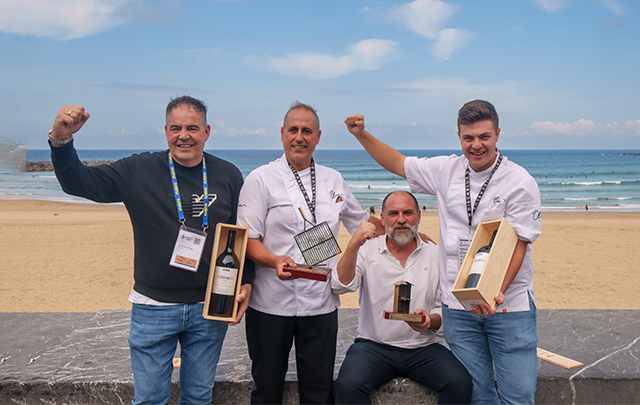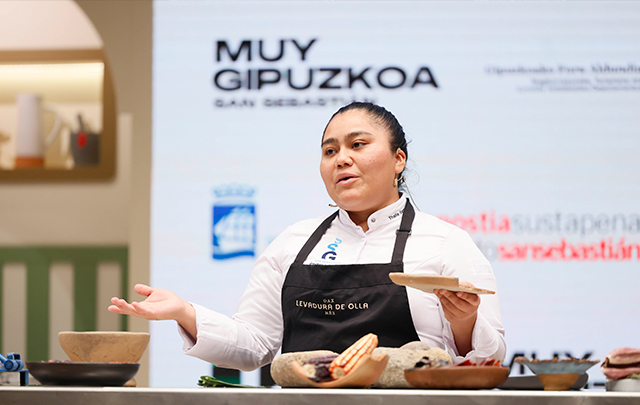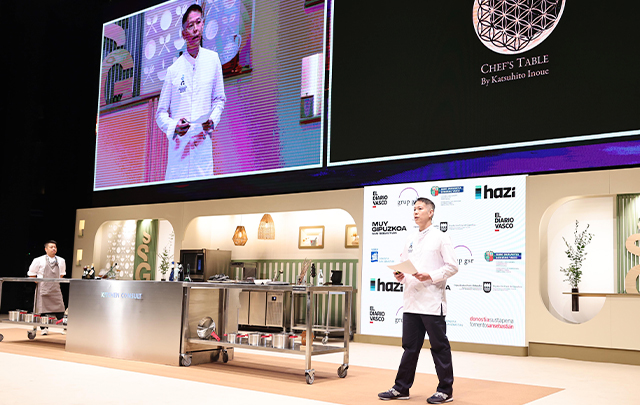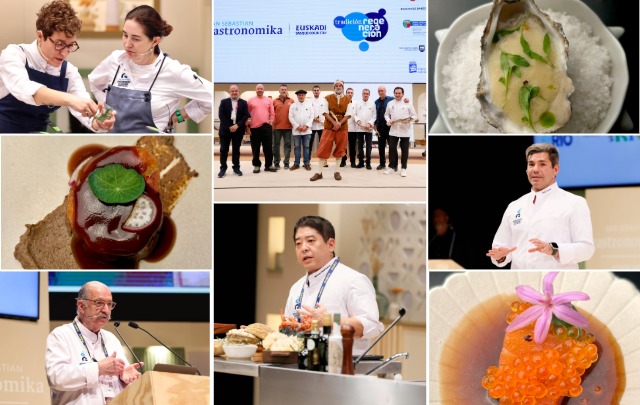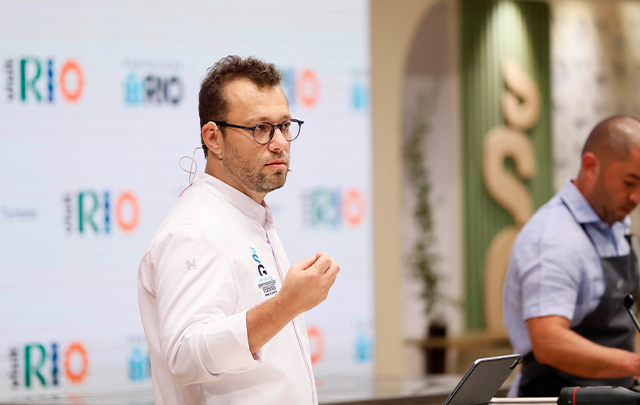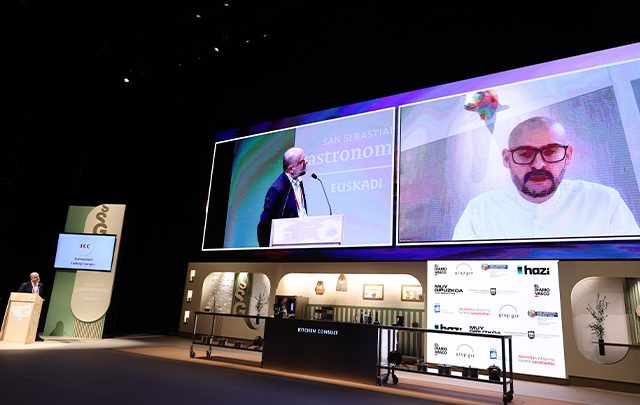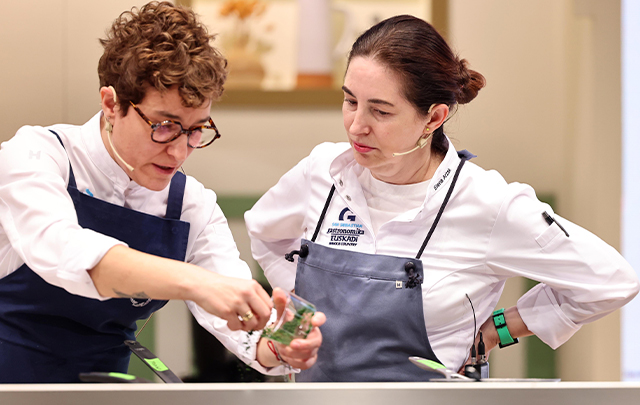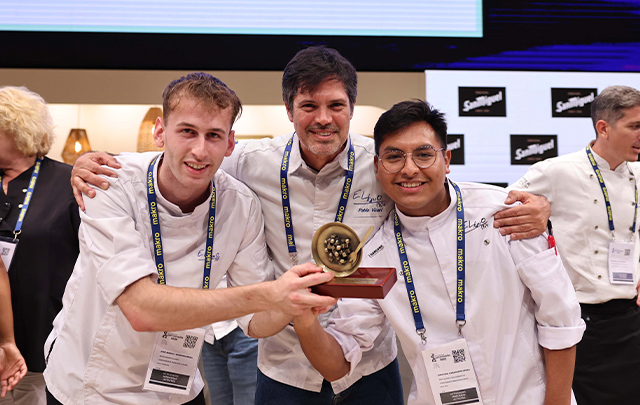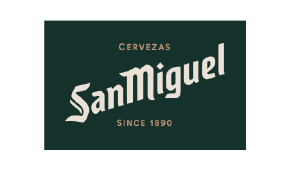News
Gastronomika is seeking a chef for its new restaurant in San Juan
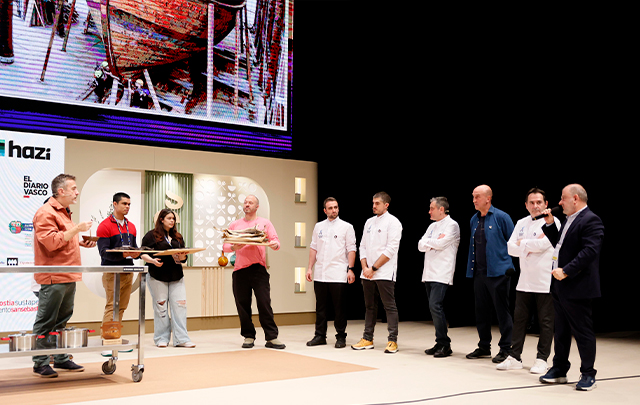
With the help of its creators, we learn about the project to rebuild the San Juan, a whaling ship that sank in 1565 and will set sail for Canada in two years' time
This unprecedented feat of naval archaeology, carpentry and historical dissemination provides Gastronomika with an opportunity to discuss navigation and survival cuisine at sea. Led by Vocento Gastronomía director Benjamín Lana, attendees learned about the project from its leaders and even 'entered' the ship's interior via a live video call.
Xabier Agote, the president and founder of Albaola (Pasaia), explained the scale of this undertaking. He has dedicated his entire life to the sea, working as a sailor, rower, shipbuilder, promoter and disseminator of maritime culture. “I became a carpenter to recover the fishing heritage of the Basque Country. When the request came from Canada to build an exact replica of the whaling ship San Juan, the difficulty lay in reviving lost trades," he acknowledged, adding that the hull will soon be launched and that, over the next two years, the ship will be faithfully equipped before setting sail on a two-month voyage to relive the original journey.
Connecting from the shipyard where the San Juan is being rebuilt, historian and director of Albaola's scientific department Xabier Alberdi gave those present a virtual tour of the interior of the ship, describing each of its rooms. 'According to Elcano's will, we know that the household goods of the time consisted of grills, skewers, and copper pots. He used these to make meals for the crew, which consisted mainly of non-perishable foods stored in hundreds of barrels. These included dry breads, such as biscuits or crackers; legumes; cod; dried sardines; oil; and bacon. The main drink was cider," he pointed out. "This diet was essential because the effectiveness of those sailors, considered the best in the world, depended on it," he says, proposing to revive it for the new San Juan, which will set sail in 2027 with 40 crew members and no comforts.
To this end, Benjamín invited the attending chefs to sign up for the adventure by registering with a notary during the conference, and commissioned Aitor Arregi, the chef at Elkano in Getaria, to select four renowned chefs to demonstrate some possible dishes for the future menu. The journey from the Gastronomika kitchen to that of the San Juan was undertaken by four illustrious Basques:
Josean Alija, the chef at Nerua* in Bilbao, started with green pea soup, confit cod, oil and garlic. 'Modest and austere, but comforting for sailors who gave their all without knowing if they would return,' he said, acknowledging the difficulty of the task: 'Cooking for enjoyment is completely different to cooking for survival.' Next was Pablo Loureiro, chef at Casa Urola in San Sebastián, who prepared a rehydrated dried octopus soup live on stage. “It was left to dry on bamboo racks,” he explained. It was a simple yet tasty stew, 'deeply rooted in our coast, but now only found in homes and txokos,' he said. It also contained seasonal vegetables such as onions, leeks and carrots, as well as toasted bread and bacon.
Roberto Ruiz, the chef at Hika Gastronomiko in Villabona, referred to Pedro de Tolosa, who was in charge of provisions at El Cano, to highlight the seafaring origins of his dish: a zurrucutuna, a traditional Basque soup based on sopako, a type of dry bread similar to the biscuits of the time. Sopako is made without yeast so that it does not ferment and become moist too quickly. Ruiz added garlic and cod before boiling the mixture in a fumet to create a simple yet calorific recipe that would have fed the crew of the time. Javier Rivero, the chef at AMA* in Tolosa, offered a tasting of cold meats 'preserved in their own fat, such as foal in its own fat, as well as pork and lamb', with a modern twist. 'This demonstrates how they would have eaten on the San Juan if they had known what we know today,' he said.
The brilliant session concluded with chef Christopher Haatuft, owner of the Lysverket restaurant in Bergen, Norway, presenting the four chefs with dried whale meat and cod that had been dried in the open air, 'as was done in my homeland before the Basques taught us how to salt fish'.



